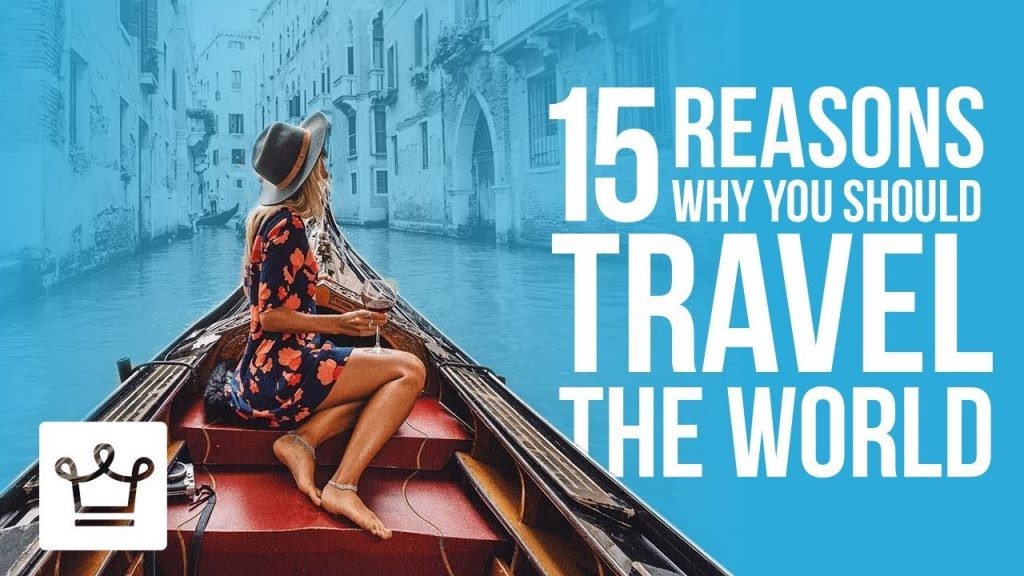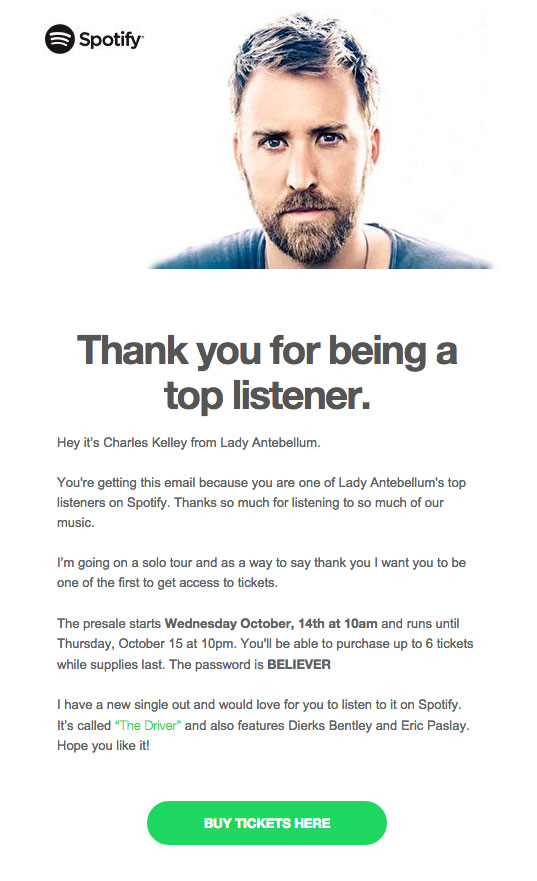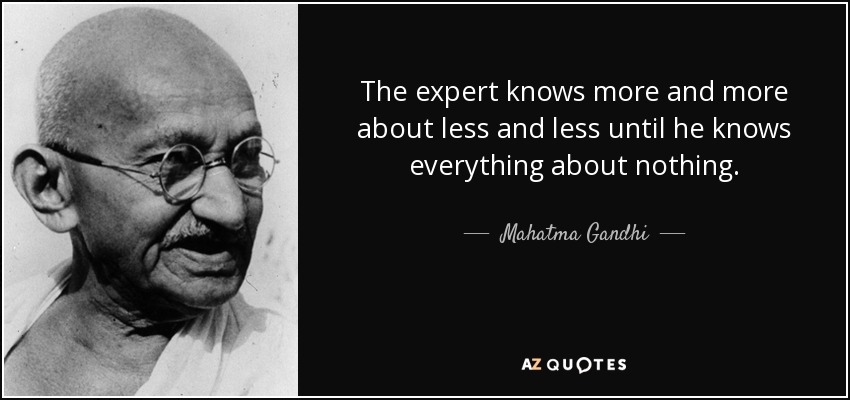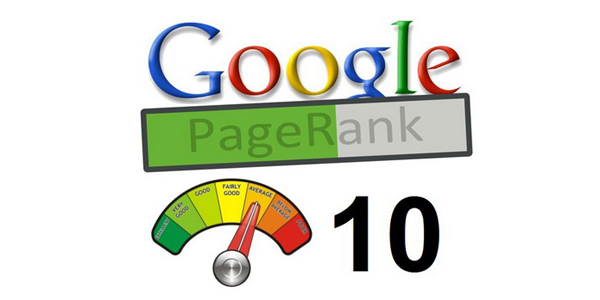The travel industry is almost contradictory in its nature.
On one hand, it is an enormous ever-growing market, which has doubled in value in just ten years, projected to generate £616 billion in 2019.
On the other hand, the service it provides is highly personal.
Travellers, now more than ever, look for unique, customised experiences, tailored to their needs.
This is becoming increasingly easy, with customers looking past packaged holidays, choosing to plan and book their holidays themselves.
Understanding this duality is crucial for today’s travel businesses to succeed.
Some have to be able to engage audiences on a personal level, on a huge scale.
This is the best way to convert your audience into paying customers.
With the market being as competitive and unforgiving as it is, there’s not a lot of margin for error.
Who are your Customers?
In order to attract and engage potential clients, you have to pinpoint their customer personas.
Assess your travel products and identify who they cater to. Are you offering experiences for adventurers, corporate travel, or beach-resort deals for families?
There are no jack-of-all-trades travel arrangements and marketing needs to be tailored to your customer.
Personalisation is key and that requires clearly-defined buyer personas.
Fortunately, there are a lot of tools and guides that help with this important step.
It’s important to take a look at your website audience insights in Google Analytics to get an understanding of the location, demographics, activities and travel segmentation of your customers.
Understand the channels and devices your audience is using to access your business.
You should end up with a couple of personas that you can use to help guide your marketing, engagement and conversion strategies through digital channels.
Understanding your Customer’s Journey
The development of digital advertising channels has changed customer’s expectations.
Engaging visitors and acquiring customers is no longer about just being in the right place at the right time to influence their decision process.
Kantar’s study concluded that 50% of users find brand’s posts irrelevant to them.
Businesses who treat digital and online channels as another touch-point and a chance to swoop in and sell their product run the risk of further alienating an already tired audience.
It’s important to understand the customer’s decision journey end-to-end.
This process has four phases, each with its own challenges and opportunities.
Google calls them dreaming, planning, booking and experiencing micro-moments.
McKinley named them consideration, evaluation, conversion and post-purchase phases.
With the increased need for personalisation, especially in Travel & Leisure, it’s sensible to plan marketing strategies, activities and metrics for customers in each of these phases.
Let’s explore what they are and how travel companies can approach them in order to convert audiences into customers.
Consideration
At this time, travellers just have a general idea and a wish to travel.
They are still considering options, destinations and are open to suggestions.
They are not yet making decisions and shouldn’t be pressured into it.
Awareness is the name of the game here.
Any content the considering client sees should be memorable, inspiring, authentic and sincere.
Customise it with your consumer personas in mind.
Make your brand stand out.
Effective strategies include content marketing, to reach users who are in this initial consideration phase.
Engaging your audience and, eventually, boosting revenue, starts with offering value to your potential customers, at all stages of their booking journey.

It is also important to develop a strong social media presence.
To do that, we have to understand why people use social networks in the first place.
Consumers mainly use social networks to connect and converse, and to be entertained.
Value for consumers comes from getting what they want.
If they are looking for connections, conversations and entertainment, travel companies should strive to offer them exactly that.
Build emotional connections with your audience. Engage with them.
Humanise and introduce your company, initiate sincere and meaningful conversations.
Give inspiration.
- Timing
Tourists in Britain book their holidays a month in advance (on average), but they start thinking about them a lot sooner.
It’s a good idea to start running awareness campaigns in from September onward, depending on your seasonality.
- Define metrics
Choose statistics that can quantify and represent the success of your strategies for each phase of the consumer’s decision journey.
In the case of initial consideration, some useful metrics are engagement rate, direct, social and organic traffic, search conversion rate.
Pick those that work best with your strategy.
- Devices
Consider the devices your customers use in different stages of their decision journey.
For example, they might be using mobile devices during the initial consideration, but switch to desktop when they decide to book.
Make sure the whole process is effectively targeted.
- Platforms
Don’t have the same profile on all social platforms.
Utilise unique aspects of each network and make sure your content reaches its full potential.
Stand out with your visuals and raise awareness with unique solutions.
A great example of a content strategy done right is The Journal by Intrepid Travel.
When targeting travellers who are looking for unique and adventurous experiences, offer valuable and informational content, combined with a recognisable visual identity.
With 583K Facebook followers and 239K on Instagram and a very engaged audience, the approach of Intrepid seems to be working.
Evaluation and Conversion
What happens when the consumer chooses a destination?
The dream travel suddenly becomes a reality.
In the evaluation phase, audiences are no longer looking for ideas or inspiration.
They are searching for information:
- Prices
- Flights
- Hotel availability
- Holiday activities
In the conversion phase people compare information, make a decision and complete their purchase.
For a travel company, these phases are the opportunity to turn audiences into customers.
This is especially true for smaller businesses, as they usually don’t have the budget to compete with big brands’ awareness campaigns.
In the initial consideration phase, companies try to generate demand.
Now it’s time to focus on fulfilling that demand.
When a customer searches for travel products, it’s important for your company to be there with an offer.
Focusing on these micro-moments generates what you’re ultimately looking for: conversions.
Your targeting is crucial here.
We’ve talked about creating the customer persona. Utilise data you’ve gathered so far, and target your niche as precisely as you can.
Consider the channels you’ll use.
Non-branded search marketing, display re-marketing and e-mail marketing (newsletters) are recommended in the evaluation phase.

According to Google, when customers start planning the holiday, the most common searches include “hotels/car rentals/flights to destination”. Focusing on non-brand keywords enables you to show up in these searches.
E-mail marketing offers a lot of opportunities during the planning phase of the customer’s decision process.
According to MailChimp, an average 20% of only e-mails are opened, with a 2% click-through rate in the travel industry.
To maximise the effectiveness of your e-mail campaigns, try to provide value to your customers before they consider your offer.
Include tips, advice or coupon codes in your newsletters:

Keep your e-mails short (or at least concise), to-the-point and include call-to-action prompts throughout your message.
When customers compare different products and narrow down their choices, they typically search for “[brand name] + [location].”
A sound branded SEO and SEM strategy will enable you to come up in these searches.
Metasearch presence is also becoming vital.
When customers compare different options, they typically use websites like TripAdvisor, Skyscanner or Kayak.
Being present in these searches is a fast way to become a part of your niche market.
Target customers that show interest in the products you can offer.
In order to measure the success, and possibly optimise your campaigns, defining important metrics is vital.
For demand fulfilment activities, some vital numbers are conversion rate, cost per conversion, revenue per conversion and margin.
Keep an eye out on your activities and their performance.
Don’t wait for things to start happening, change and optimise if you’re not getting the results you expect.
Another important nudge that can turn a viewer into a customer is the company’s availability for inquiries.
Businesses often forget this.
60% of customers who contact businesses on social media expect an answer within an hour and the same number would express their disappointment for the brand for not receiving a timely response.
Make sure you’re always available for customers. Beef up your customer service, where necessary.
Create FAQs, useful articles and posts that give advice on common questions, reducing the number of informational enquiries your sales team need to deal with.
Post-Purchase
The work is not complete when the customer completes a purchase.
The phase that happens after travellers book a holiday is perhaps the most important for travel companies.
Don’t let the reputation you’ve established through this whole process go to waste. Build on it.
The best marketing resource is a happy customer.
Stay in touch with them after they purchase your product. Get their feedback and understand their experience.
Personally contacting your customers will show them you care about them and increase their chances of returning to you.
We’ve talked about the need for personalisation: gather information from customers, what worked for them and what didn’t and incorporate it into your future offers.
Encourage your customers to create and post content.
Crowdsourcing your content will make your marketing more human, personal and valuable: perfect for the initial consideration phase.
Besides this, we can’t understate the importance of reviews.
83% of people booking holidays online say that reviews play a crucial role in their booking decision.
Your reputation on websites like TripAdvisor can essentially decide your revenue.
Make it easy for your customers to share their feedback and encourage them to do it with a prize if necessary.
Make sure to address all reviews, good or bad, on every online platform.
A well thought-out reply to a negative review can do more to encourage sales than a positive review ever could.
Show you appreciate your customers and you’re open to honest feedback.
Conclusion
Travel marketing is much more than just offering deals at peak times.
Successfully engaging your audience and acquiring business is a process.
It requires a deep understanding of the customer’s decision journey and the advertising techniques and strategies you can use in each of its phases.
Each part is important, as it influences what decisions customers make afterwards, and each journey is an opportunity for travel companies to attract further business.
In a vast market that Travel & Leisure is, the greatest asset you can have is understanding of your customer’s personal needs.
Equally, that is exactly what they expect from your business.
Talk To Us
Advice tailored to your website, and your resources is crucial to achieving the best possible ROI.
Get in touch with us today for a FREE, no-obligation website audit.
































